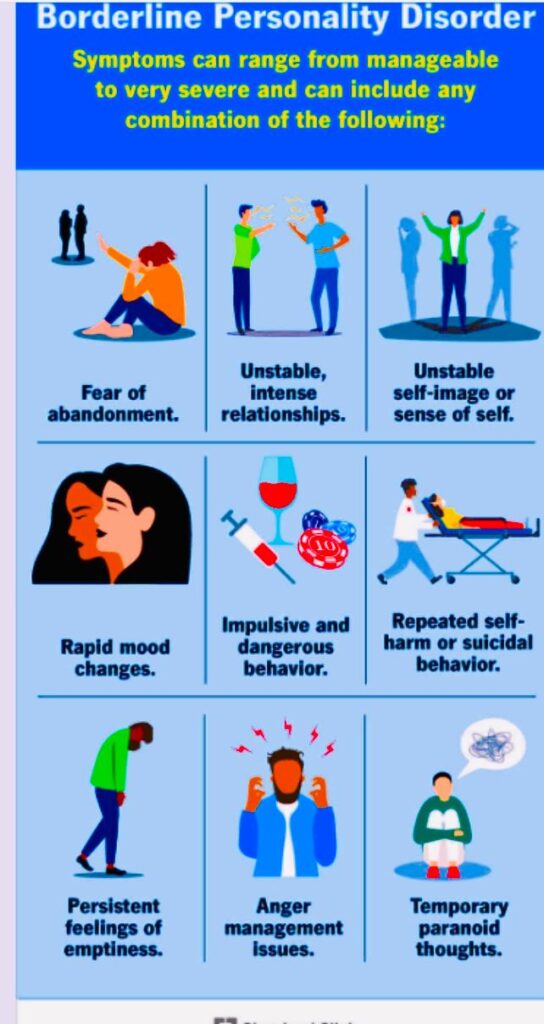
Understanding Borderline Personality Disorder (BPD)
Borderline Personality Disorder (BPD) is a complex and often misunderstood mental health condition that affects the way individuals think and feel about themselves and others. It is characterized by intense emotional experiences, unstable relationships, and a distorted self-image. People living with BPD, for example, may struggle with mood swings, impulsive behaviours, and a persistent fear of abandonment.
Symptoms and Diagnosis
BPD symptoms typically emerge during adolescence or early adulthood and can vary in intensity over time. Common symptoms include:
- Emotional instability: Rapid mood changes, often triggered by seemingly minor events.
- Impulsive behaviours: Risky activities such as reckless living, substance abuse, use of alcohol or binge eating.
- Unstable relationships: Intense, short-lived relationships that swing between idealization and devaluation.
- Fear of abandonment: Desperate efforts to avoid real or imagined rejection or separation.
- Distorted self-image: A fluctuating sense of identity and self-worth.
- Self-harming behaviours: Including suicidal thoughts or actions, which are unfortunately common in those with BPD.
- Chronic feelings of emptiness: A persistent sense of inner void.
- Intense anger: Difficulty controlling anger or frequent outbursts.
Diagnosis is typically made by a mental health professional using criteria outlined in the Diagnostic and Statistical Manual of Mental Disorders (DSM-5). It often involves clinical interviews and assessments to distinguish BPD from other psychiatric disorders.
Causes and Risk Factors
While the exact cause of BPD is unknown, research suggests a combination of genetic, environmental, and neurobiological factors. These may include:
- Family history: Having a close family member with BPD or another personality disorder increases risk.
- Trauma: Childhood abuse, neglect, or abandonment are significant contributing factors.
- Brain structure and function: Differences in areas of the brain involved in emotion regulation and impulse control.
Treatment Approaches
Borderline Personality Disorder is treatable, and many individuals experience significant improvement with the right therapeutic support. Treatment often involves:
- Dialectical Behaviour Therapy (DBT): Specifically designed for BPD, DBT helps individuals manage emotions, tolerate distress, and improve relationships.
- Cognitive Behavioural Therapy (CBT): Focuses on identifying and changing distorted thought patterns and behaviours.
- Medication: While there is no specific drug for BPD, medications can help manage symptoms like depression, anxiety, or mood instability.
- Psychodynamic Psychotherapy: Explores unconscious thoughts and early life experiences that shape current behaviours.


